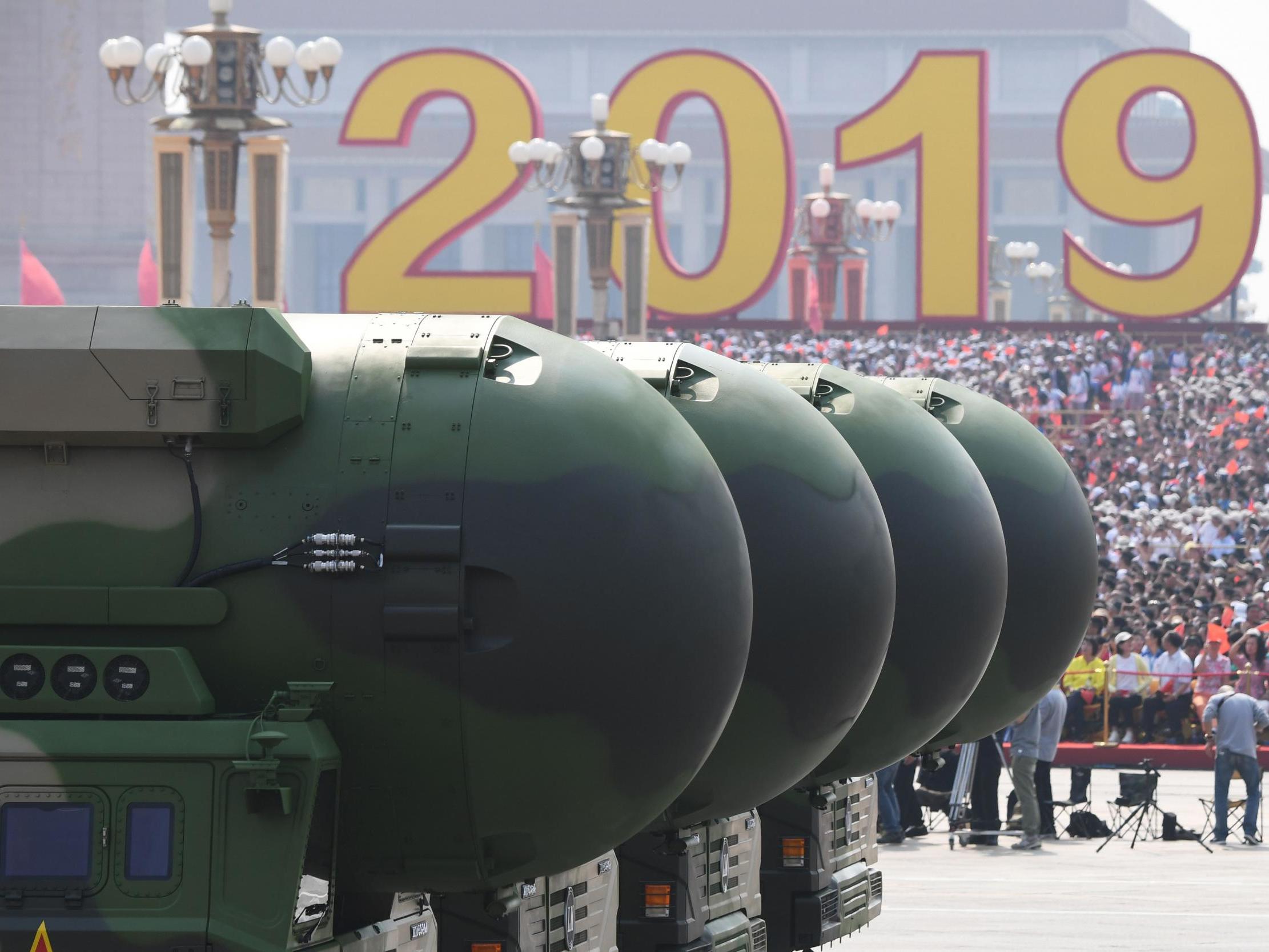China may have conducted nuclear tests despite claiming to observe international treaty, US report claims
State Department report offers no proof but cites concerns over activity at Lop Nur site throughout 2019

Your support helps us to tell the story
From reproductive rights to climate change to Big Tech, The Independent is on the ground when the story is developing. Whether it's investigating the financials of Elon Musk's pro-Trump PAC or producing our latest documentary, 'The A Word', which shines a light on the American women fighting for reproductive rights, we know how important it is to parse out the facts from the messaging.
At such a critical moment in US history, we need reporters on the ground. Your donation allows us to keep sending journalists to speak to both sides of the story.
The Independent is trusted by Americans across the entire political spectrum. And unlike many other quality news outlets, we choose not to lock Americans out of our reporting and analysis with paywalls. We believe quality journalism should be available to everyone, paid for by those who can afford it.
Your support makes all the difference.China may have secretly conducted underground nuclear test explosions despite claiming to observe an international treaty banning such blasts, according to a new US government report.
The US State Department document offers no proof, but cites concerns over activities at China’s Lop Nur nuclear test site throughout 2019, including its “use of explosive containment chambers”.
“China’s possible preparation to operate its Lop Nur test site year-round, its use of explosive containment chambers, extensive excavation activities at Lop Nur and a lack of transparency on its nuclear testing activities ... raise concerns regarding its adherence to the zero yield standard,” said the document, first reported by the Wall Street Journal.
“Zero yield” refers to a nuclear test in which there is no explosive chain reaction of the type ignited by the detonation of a nuclear warhead.
Nuclear test explosions are banned under the Comprehensive Test Ban Treaty (CTBT) – an accord drawn up in 1996 and ratified by neither China nor the US, but which Beijing claims to adhere to nevertheless. Were the CTBT ratified, nations would be obliged to allow inspections of sites causing concern.
The US report said Beijing’s alleged lack of transparency included blocking data transmissions from sensors linked to a monitoring centre operated by the Comprehensive Test Ban Treaty Organisation (CTBTO) – the international agency verifying compliance with the CTBT.
But a CTBTO spokesperson told the Wall Street Journal there had been no interruptions in data transmissions from China’s five sensor stations since the end of August 2019 following an interruption that began in 2018.
The allegations could see already strained US-China relations further fray amid Trump administration attempts to pin the blame for the coronavirus pandemic on Beijing.
Donald Trump used his Wednesday press briefing to tease a theory, increasingly popular on his favoured network Fox News, that Covid-19 may have escaped from a Wuhan laboratory with weak safety controls.
The president indicated Xi Jinping had spoken to him about the laboratory in a recent phone call, but said it would be “inappropriate right now” to reveal what was said.
His remarks are likely to fuel increasingly wild speculation, later fanned by Mike Pompeo, who urged China “to come clean” about the virus’s origins.
Addressing the report hours later, a senior US official claimed the concerns about China’s testing activities strengthened Mr Trump’s case for insisting China join the US and Russia in talks on an arms control accord to replace the 2010 New Start treaty between Washington and Moscow, which expires in February 2021.
New Start restricts the United States and Russia to deploying no more than 1,550 nuclear warheads, the lowest level in decades, and limits the land- and submarine-based missiles and bombers that deliver them.
“The pace and manner by which the Chinese government is modernising its stockpile is worrying, destabilising, and illustrates why China should be brought into the global arms control framework,” the US official told Reuters on condition of anonymity.
China, estimated to have about 300 nuclear weapons, has repeatedly rejected Mr Trump’s proposal, arguing its nuclear force is defensive and poses no threat.
Russia, France and Britain – three of the world’s five internationally recognised nuclear powers – signed and ratified the CTBT, which still requires ratification by 44 countries to become international law.
China and the US are among eight signatories that have not ratified it. But China has declared its adherence to its terms, while the US has observed a unilateral testing moratorium since 1992.
Additional reporting by Reuters
Join our commenting forum
Join thought-provoking conversations, follow other Independent readers and see their replies
Comments